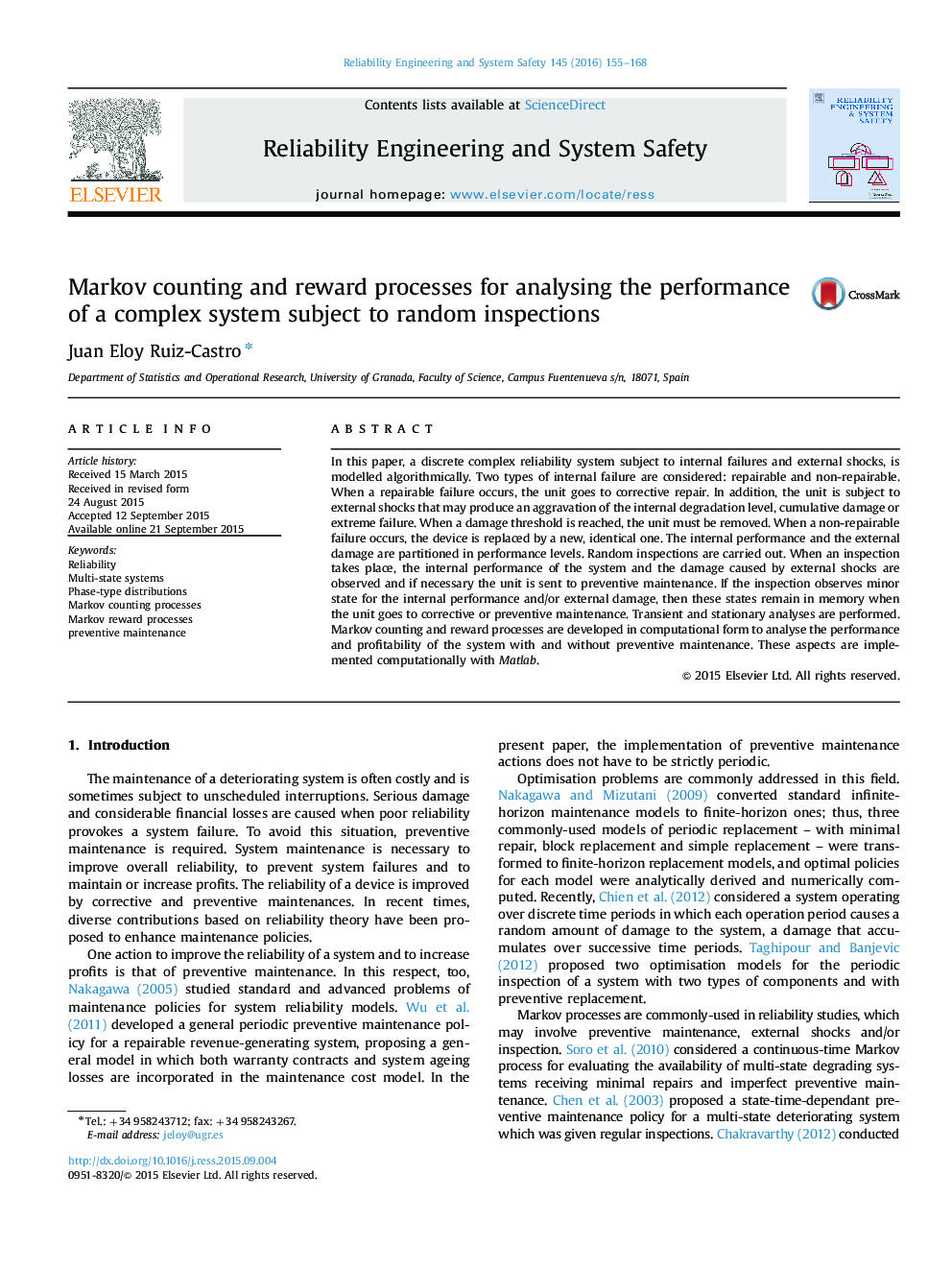| Article ID | Journal | Published Year | Pages | File Type |
|---|---|---|---|---|
| 805399 | Reliability Engineering & System Safety | 2016 | 14 Pages |
•A multi-state device is modelled in an algorithmic and computational form.•The performance is partitioned in multi-states and degradation levels.•Several types of failures with repair times according to degradation levels.•Preventive maintenance as response to random inspection is introduced.•The performance-profitable is analysed through Markov counting and reward processes.
In this paper, a discrete complex reliability system subject to internal failures and external shocks, is modelled algorithmically. Two types of internal failure are considered: repairable and non-repairable. When a repairable failure occurs, the unit goes to corrective repair. In addition, the unit is subject to external shocks that may produce an aggravation of the internal degradation level, cumulative damage or extreme failure. When a damage threshold is reached, the unit must be removed. When a non-repairable failure occurs, the device is replaced by a new, identical one. The internal performance and the external damage are partitioned in performance levels. Random inspections are carried out. When an inspection takes place, the internal performance of the system and the damage caused by external shocks are observed and if necessary the unit is sent to preventive maintenance. If the inspection observes minor state for the internal performance and/or external damage, then these states remain in memory when the unit goes to corrective or preventive maintenance. Transient and stationary analyses are performed. Markov counting and reward processes are developed in computational form to analyse the performance and profitability of the system with and without preventive maintenance. These aspects are implemented computationally with Matlab.
